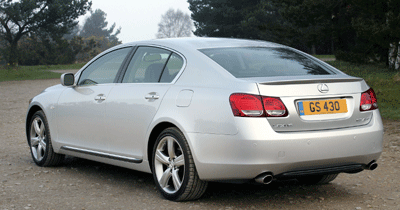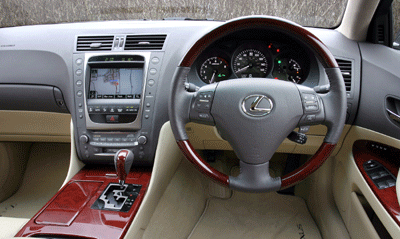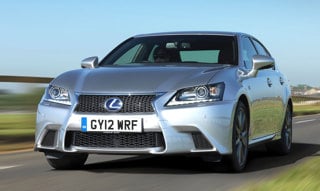Review
That hurdle can be overcome once the marketing and sales staff have done their job and actually got the prospective customer into the showroom and looking at the car itself.
The quality of the product and its award-winning aftersales service will be enough to convince most executive car choosers that Lexus is a worthy contender.
This is certainly so with the third generation GS saloon, launched in April this year. Lexus’s rival to the 5-series and E-class is as quiet, refined and loaded with technology as any buyer might expect.
Its smooth, swooping lines are more reminiscent of a grand tourer than a saloon, but Lexus dealers can expect more of this in other models.
The GS is the first production model to display the carmaker’s new ‘L-finesse’ design principle, which will shape the coming generation of Lexus cars. Buyers can choose between two petrol engine variants: a 3.0-litre V6 and a 4.3-litre V8. Both are only offered with a six-speed automatic transmission. The range starts with the GS300, through the GS300 SE and GS300 SE-L, to the flagship GS430.
Even the entry-level GS300 boasts an impressive specification, as any customer considering an executive-class car would expect.

Comfort and convenience is at the heart of this car, which comes with keyless entry and push-button start, Bluetooth connectivity, a touch screen display, in-dash CD autochanger and dual-zone climate control.
The GS300SE gains a leather interior, DVD-based satellite navigation system, reversing camera and parking sensors.
The GS300 SE-L further cossets occupants with its electric sunroof and upgraded 14-speaker Mark Levinson stereo system.
Topping everything off is the GS430 with a wood and leather steering wheel, plus adaptive cruise control with Lexus’s pre-crash safety system, which automatically prepares the seatbelts and emergency braking system.
The car achieved the maximum five stars, for adult occupants and four stars for child occupants in EuroNcap crash testing. This is no surprise, given its 12 airbags (10 in the entry-level GS300) and an array of active and passive safety systems.
The GS430 also has the latest generation of Lexus’s vehicle dynamics integrated management system, which includes ABS with EBD, traction control, stability control and variable ratio steering. Also standard is adaptive front lighting to increase visibility during cornering at night.
Since its launch in April, Lexus has sold 1,005 models and expects to reach 1,750 sales by the end of the year.
In 2006, full year sales of the GS are expected to be 2,100 units.

Behind the wheel
The range-topping GS430 does everything effortlessly. Its V8 produces 307lb ft of torque at 3,500rpm and will pull the car easily to well more than twice the motorway speed limit. Standard adaptive suspension and electrically variable power steering give the driver a decent amount of feedback on how the car is behaving.

Reversing using the rear-view camera will take owners a while to get used to, as the steering-linked parking guide is a little slow to react. Although the technology will impress passengers, it seems a little over-complicated when compared to normal parking sensors.
Overall, the car is excellent, although it still lacks character compared to its German rivals. But for the business professional that doesn’t want to shout about success, the GS430 is an intelligent choice.
Price: £30,400-46,755
Engines: 3.0-litre petrol: 245bhp; 4.3-litre petrol: 279bhp
Performance: 3.0 0-62mph: 7.2sec; top speed: 148mph, 4.3 0-62mph: 6.1sec;
top speed: 155mph
Transmission: Six-speed automatic
Efficiency: 28.8-24.8mpg (combined); 232-269g/km CO2
CAP 3yr/30k: £13,825-17,600 (46-38%)
Rivals: BMW 5-series, Mercedes-Benz E-class, Audi A6
Strengths
Effortless to drive, safe, well-loaded, subtle
Weaknesses
No diesel offering, lacking in character
Opportunity
Will appeal to the quietly successful who doesn’t want to appear flash
Threat
The German marques still have stronger brand image
USP
Discrete executive-class motoring
Factsheet
No information available.














